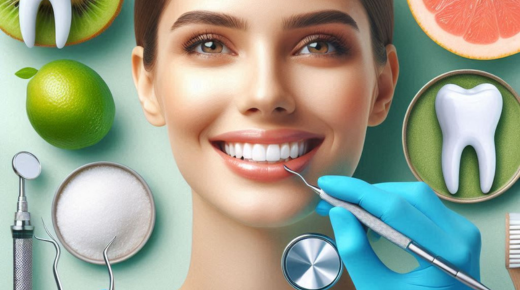Foods to Avoid for Bad Breath

Bad breath is a common problem that affects 25% of the average population. It’s an unpleasant odor that impacts your confidence and how you interact and engage with your friends, colleagues, and family members. Eating heavy foods that contain onion or garlic may leave a temporary smell, which can be dealt with by drinking water, mints, or fresh mouth sweeteners. However, if the foul smell doesn’t go away even after brushing your teeth, it may indicate a dental issue or poor oral hygiene. Most often, people aren’t aware that they have bad breath because they become so accustomed to the smell that they can’t tell the difference between fresh, clean, and stinky breath.
If you have a gum infection, gingivitis (which is treatable), or a more serious issue like periodontitis (which erodes the bone), the starting symptoms of these conditions may include bad breath and pain. In such cases, you must visit a nearby dentist or dental practice in Weston, MA to get treated.
Foods That Can Cause Bad Breath:
Bad breath, also known as halitosis in medical terms, can occur due to irregular and unhealthy eating habits, a poor lifestyle, and poor oral hygiene. Below are the most common food items that cause bad breath:
- Tea and coffee: Some foods completely dry out your mouth, making it the perfect environment for bacteria, which then feed on your gums and teeth, causing tooth damage and bad breath. Tea and coffee reduce saliva secretion and leave a lingering smell in your mouth after you drink them. They stain your teeth. It’s evident that if one drinks multiple cups of coffee or tea in a day, their teeth and oral hygiene will be negatively impacted. But leaving the morning without having your caffeine intake might seem serious or probably impossible for some. In that case, if you have to consume this beverage, you can drink or wash your mouth with a glass of water. That way, your cheeks will be hydrated, and you’ll get rid of the tea and coffee stains.
- Alcohol: Drinks and beverages with a high concentration of sulfites have a stinky odor and can certainly cause bad breath. Alcohol is too dehydrating in nature; it completely sweeps the moisture out of your mouth, creating a safe space for bacteria to survive and thrive. One can limit their alcohol intake; occasional drinks are fine, but regular consumption is bad for your health, including your teeth.
- Garlic: Most people know that garlic has a strong, pungent smell that can be hard to get rid of sometimes. Even after brushing your teeth or having a few mint candies, the garlic lingers and doesn’t go away. People have observed that they can taste and smell pungent scents hours or days after having a meal that contains garlic. The garlic odor can enter your bloodstream and then your lungs, leading to bad, stinky breath. No doubt, garlic makes your food, specifically pasta sauces, taste a hundred times better. But sometimes, one must be conscious of their food habits.
- Protein: If you are on a high-protein diet, there might be a chance that this is the primary cause of your bad breath. Although protein itself doesn’t have any smell, when consumed in high quantities relative to fat and carbohydrate intake, that’s where the problem starts. The body then uses the protein for energy, and this process, known as ketosis, releases a byproduct called ketone. Ketones have a pungent smell that can’t be removed or masked by brushing or flossing your teeth. It doesn’t mean that one should stop eating protein-rich foods; if your diet is healthy and requires such items, you should have them. It’s advised to balance it out with fresh fruits and vegetables.
- Onions: Onions are rich in sulfurous content, which, when consumed, can enter your bloodstream and then your lungs, leading to bad breath. That’s why brushing your teeth, flossing, and using mouthwash won’t just do the job; you also need to maintain a fresh and clean diet.




